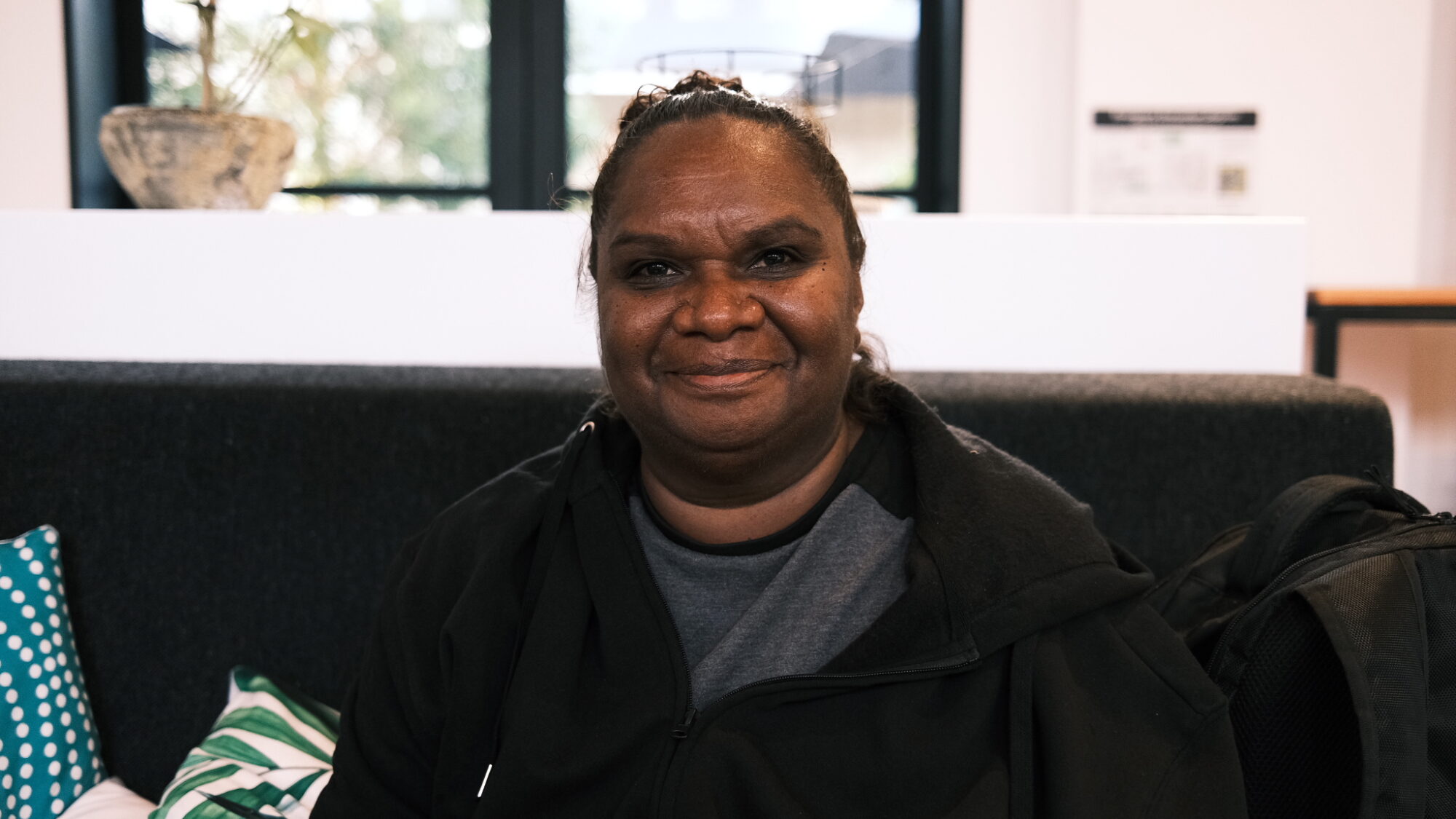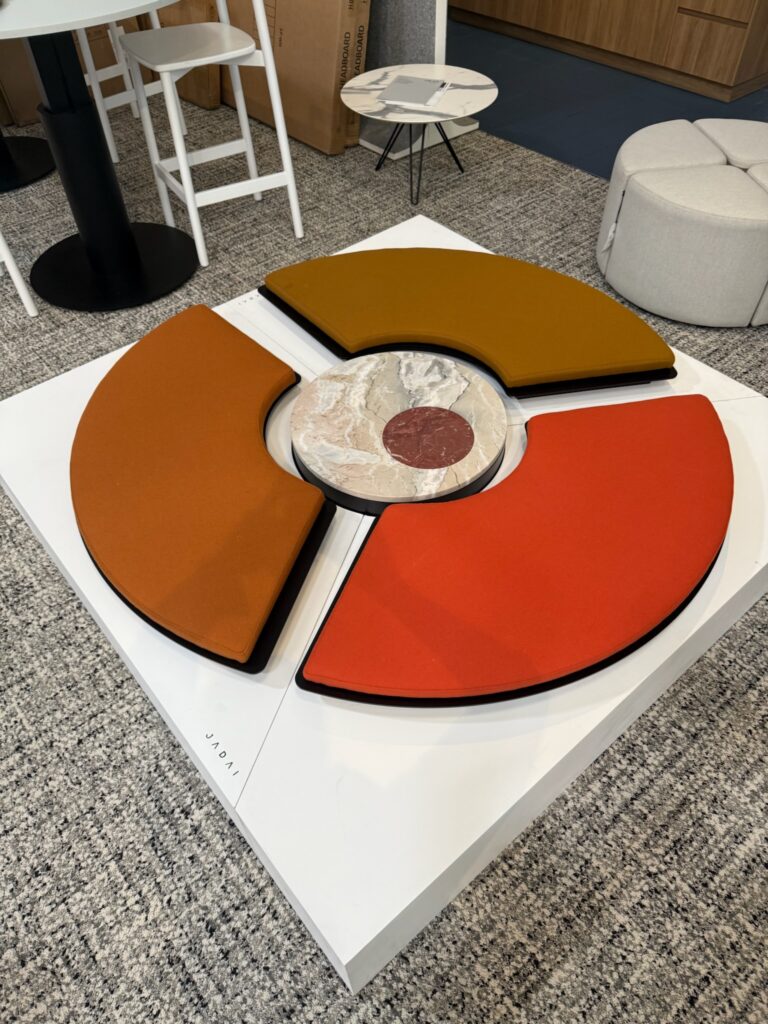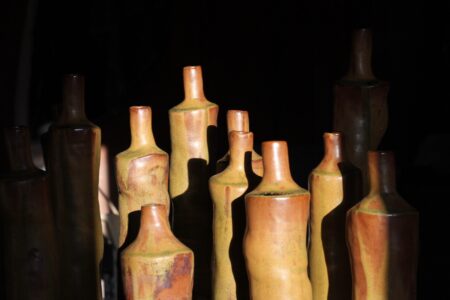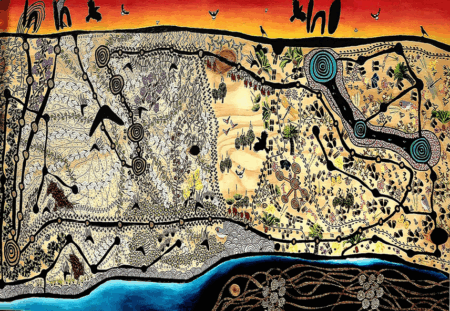For the month of July to align with NAIDOC week, we are running a series of stories featuring a number of First Nations artists for our ‘Artist Of the Month’ program. This piece is about Nuriah Jadai and the empire she is building.
“The concept of having a golden hour, which shows in the morning and afternoon…I want to hold that sense for Country too. To me it’s more than gold. It’s precious gems because it’s my home. Mangala and Kulyakartu is my home, where my old people and my ancestors are from.” These are words spoken by artist Nuriah Jadai – whose relationship with Country permeates every aspect of her multidisciplinary artistic practice.
Nuriah Jadai speaks with a firm gratitude that serves as a reminder to all of appreciating the land we come from. Born in Derby and raised in the Bidyadanga Community, the largest Aboriginal community in Western Australia, Nuriah grew up with her mother, grandmother, and siblings. Her mother, a single parent, nurtured her children’s creativity while maintaining deep connections to their cultural heritage. Today, Nuriah carries on this legacy as a single mother herself, maintaining the artistic traditions of her people and passing on knowledge to the next generation.
Upbringing
Throughout her childhood, Nuriah spent significant time in ancestral communities, particularly Parnngurr and Punmu community – places that have shaped her artistic views over time. “I come from a long line of artists,” she explains, referencing relatives like Nola Taylor and her grandfather Muuki (both Martumili artists). This artistic lineage was her foundation and inspiration, for which she is grateful.
“I started painting at three or four,” Nuriah reflects. At seven or eight, she grew to love pencil drawing and sketching, inspired by the imaginative worlds of Paul Jennings’ books that she read growing up. She would create detailed dragon drawings and fantastical creatures with pencils, letting her imagination run wild. It wasn’t until opening a childhood time capsule that she recognised the detail of some of her early kindergarten paintings with pictures of birds and trees carefully rendered by her young hands. When opening the time capsule years later, it was a bit of a revelation for her; “I knew I was gifted with art,” she says. It was a moment that marked the beginning of her creative journey that would expand into multiple disciplines.
Work that spans disciplines
Today, Nuriah works across an impressive array of mediums. Pencils, oil pastels, photography, fabric design and fashion. Perhaps most groundbreaking is Nuriah’s work in furniture design. “I am the first First Nations female furniture designer in WA,” she states with quiet pride.
Growing up in modest circumstances she says, “Our house was like a tin shed, no bathroom or toilets. No furniture. I dreamed of one day making my own furniture.” That dream has now manifested into pieces like ‘The Gathering Place,’ which is a circular meeting place of three seats and a table in the centre. It incorporates Australian steel and marble from the Mable Bar in the Pilbara region. The fabric is used from Australia’s last operating loom. The looms heritage highlights the importance of preserving traditional craftsmanship, especially as so many historical loom companies were sold offshore. Nuriah’s furniture design represents traditional meeting places such as waterholes, shady spots, or campfires, and carries the essence of what Nuriah calls “gathering since time began.”
Printmaking and fashion are other avenues for Nuriah’s storytelling. Together with her sister Corina, she’s been exploring fashion design, recently showcasing their work at the Kafta Runway Exhibition in Broome. The fashion show was an emotional experience for Nuriah. “When we went to the fashion show there were mixed emotions. Happy tears. I was overwhelmed emotionally to see it come to life,” she shared.
“To see my mother and the other Elders alongside younger models—it was happy and emotional. Three generations wearing our clothes in celebration of culture.” For Nuriah, this embodies her life’s motto: “You can get anything from nothing and make it something.”
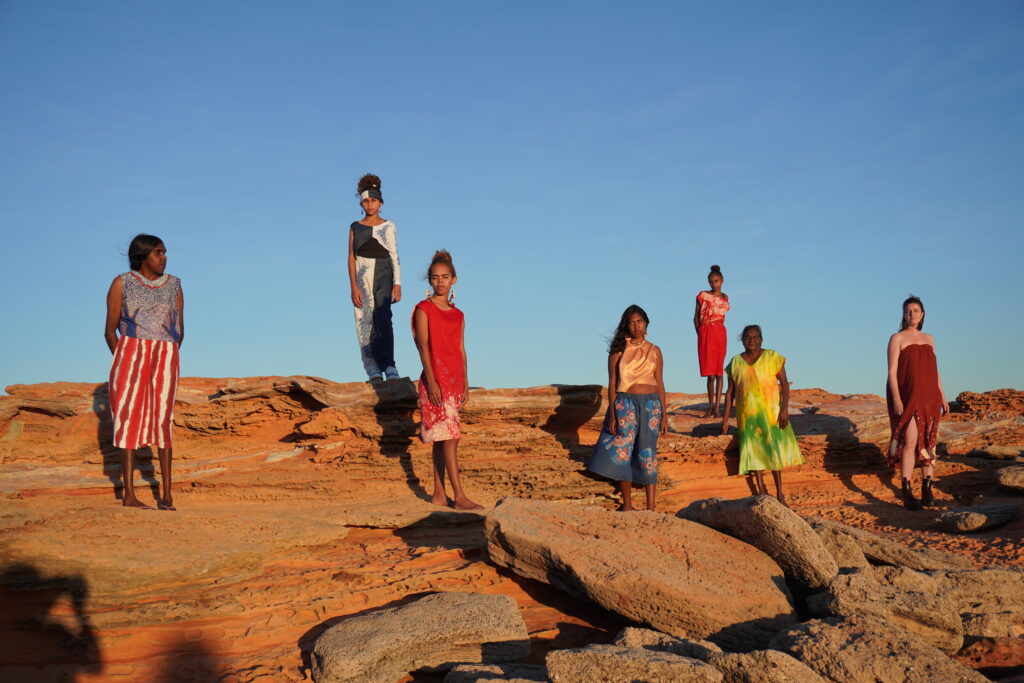
Nuriah’s achievements continue to accumulate. She speaks with particular pride about a piece purchased by the Minister for Creative Industries, Hon. Simone McGurk at the recent Revealed Exhibition at PICA, a work that showcases her mother’s country. Through this piece, Nuriah aimed to depict the beauty of the desert landscape; “I wanted to show what our Country can offer… I just wanted to show here’s my country—here’s Australia.” She adds, “such small ideas through art can impact in a very big way. When you go out on your walks, your walkabout, out on Country or with your family along the beach.. for anybody, Indigenous and non-Indigenous people, our country is so beautiful. If you just take time, you can see a lot of beauty in everything.”
Cultural Viewpoints & Looking Ahead
For Nuriah, art is inseparable from her own cultural identity. “Our art is unique in the whole entire world,” she observes. As a proud Mangala and Martu artist, she sees her work as a way to preserve and share the stories of her people who she is honoured to say are “the oldest living culture on the planet who can share our stories in all different mediums.”
Looking ahead, Nuriah dreams of establishing a gallery with her sister, a space to “tell our story to the world.” She envisions her furniture in Australian-owned businesses both domestically and internationally. She’s determined and capable saying, “If I dream it, I see it. And I want to make it. And I know I can do anything with hard work.”
Talking to Nuriah, the throughline is her gratitude for the Australian arts community. “The Australian art industry and its pathways are unique. I want to show it all around the world. I feel proud to be an emerging artist here.”
In Nuriah Jadai’s art, we glimpse talent as well as a continuous line stretching from ancient knowledge to contemporary expression. And we are incredibly thankful to have her in our Regional Arts WA community.

All images / artwork provided by Nuriah Jadai and Garth Preece from the Australian Business Volunteers
Posted in Artist Profile, First Nations, Stories.

